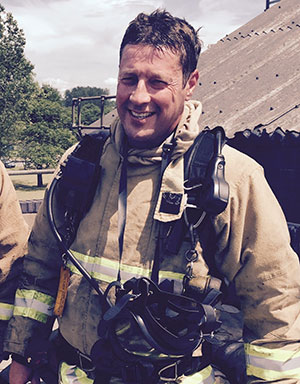As far as the Criminal Law is concerned, there are two types of cases which involve fire fatalities.
The first, and most obvious, is a death resulting from arson.
An investigation into arson would usually centre on finding the perpetrator who lit the fire. Once a suspect is found, evidence is required to show that they lit the fire and that they either intended for death to result or that they were reckless as to what might follow.
The second type of case involves a death which results from a breach of a duty of care (and not from a deliberate act) and these types of cases are far more complicated, both in terms of their investigation and in respect of the evidence required to prove the case. The potential offence here is manslaughter.
Why is manslaughter more complicated than arson? Well, there are different types of manslaughter. There is an offence of Corporate Manslaughter, under the Corporate Manslaughter and Corporate Homicide Act 2007, and there is also an offence of Involuntary Manslaughter.
Corporate Manslaughter involves an offence where an organization is guilty of an offence if the way in which its activities are managed or organized-
(a) causes a person’s death, and
(b) amounts to a gross breach of a relevant duty of care owed by the organization to the deceased.
Section 1(4)(b) states that breach of a duty of care by an organization is a ‘gross’ breach if the conduct alleged to amount to a breach of that duty, falls far below what can reasonably be expected of the organization,, in the circumstances;
Involuntary Manslaughter relates to an unlawful killing where there is no intent to kill or cause grievous bodily harm. But there are two types of Involuntary Manslaughter. There is “unlawful act” manslaughter and manslaughter by gross negligence involving breach of duty.
So how does this affect fire fatality cases?
First of all, the Fire Safety Order does not apply to any offence of manslaughter. And the fire service is not an enforcing authority for the purposes of a manslaughter investigation. Therefore, any such investigation will be carried out by the police.
This means that there would be no reference to ‘the responsible person’ or ‘persons with control’. The first question is whether one party owes another party a duty of care, followed by numerous questions about how that duty of care may have been breached.
So it can be seen that proving a manslaughter charge is a complicated matter, and that’s without even considering the evidence.
I have been involved in a number of fire fatality cases (I’m referring to non-arson cases – although I’ve been involved with a few of those too) and they have all followed a similar pattern. The police are involved at the outset. The police carry out their investigation into potential manslaughter charges. The fire service have tended to take a back seat during the police investigation. The police or CPS decide that there is insufficient evidence to prove a manslaughter charge, and drop the case. The fire service then take over and attempt to prosecute under the Fire Safety Order.
This has resulted in a number of problems for the enforcing fire authority. Firstly, the case has ‘gone cold’ (apologies), and witnesses may be either difficult to find or less inclined to assist the fire service with their investigation. Suspects have been interviewed by the police, but not in terms of the Fire Safety Order, so they have not had to answer questions about the extent of their control of the premises or about any breaches of the order which may have existed at the time of the fire. They may be invited in for further interviews, but they will be advised by their legal representatives to say that they have said all that they had to say to the police, and they will politely refuse to be interviewed further. So, no admissions or explanations from the suspect.
What is required in any investigation, from the outset, is that a multi-agency approach is adopted. The concept of ‘responsible person’ is clearly relevant to whether or not a duty of care existed. In my experience, the police have not always taken that point on board. The presence of a properly trained fire safety officer in the interview with the suspect is essential and it is important that the fire officer is given the opportunity to ask questions alongside the police officer, so that more accurate and indicative responses are elicited from the suspect in relation to fire safety precautions within the premises. This will assist in deciding the nature and extent of any breach of duty of care.
As for potential ‘persons with control’, the fire safety officer would be well placed in outlining the responsibilities of say, fire risk assessors, fire engineers and manufacturers of building materials. The Fire Safety Order establishes numerous responsibilities (or duties of care) for such parties, and it is important that these are not missed by those unfamiliar with specific fire legislation.
It is essential that the manslaughter investigation is given the best opportunity of succeeding, even if the only sentence available in relation to a crime of corporate manslaughter is a fine. If it is not, then at some point, a fire safety lawyer, who has been left to prosecute under the Fire Safety Order, will have to explain to grieving families that the maximum sentence that the defendant may receive is 2 years imprisonment, with a one third reduction for a guilty plea, and in my experience, that hasn’t gone down well.


